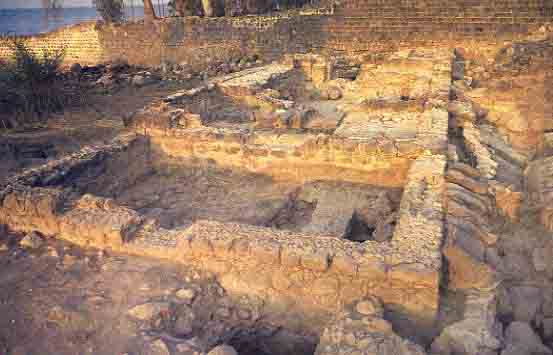Image Details

Courtesy John C. H. Laughlin
The bathhouse. Excavators identified this second- to third-century A.D. complex as a bathhouse from clay hypocaust tiles scattered within it. The tiles had served as bases for hypocaust pillars, which raised the floor so that hot steam could be distributed underneath. The plan of this bathhouse—a single row of rooms 64 feet long and 20 feet wide—closely resembles a first-century bathhouse used by a Roman garrison at Ein Gedi, on the western shore of the Dead Sea, leading excavators to conclude that the Capernaum complex was used by Romans.
Underneath the bathhouse lie the remains of a first-century A.D. building with an outer shape similar to the later structure. If the earlier building also served as a bathhouse, it would confirm the presence of a Roman garrison, and perhaps a centurion, at Capernaum, as mentioned by the Gospels (Luke 7:1–10).
